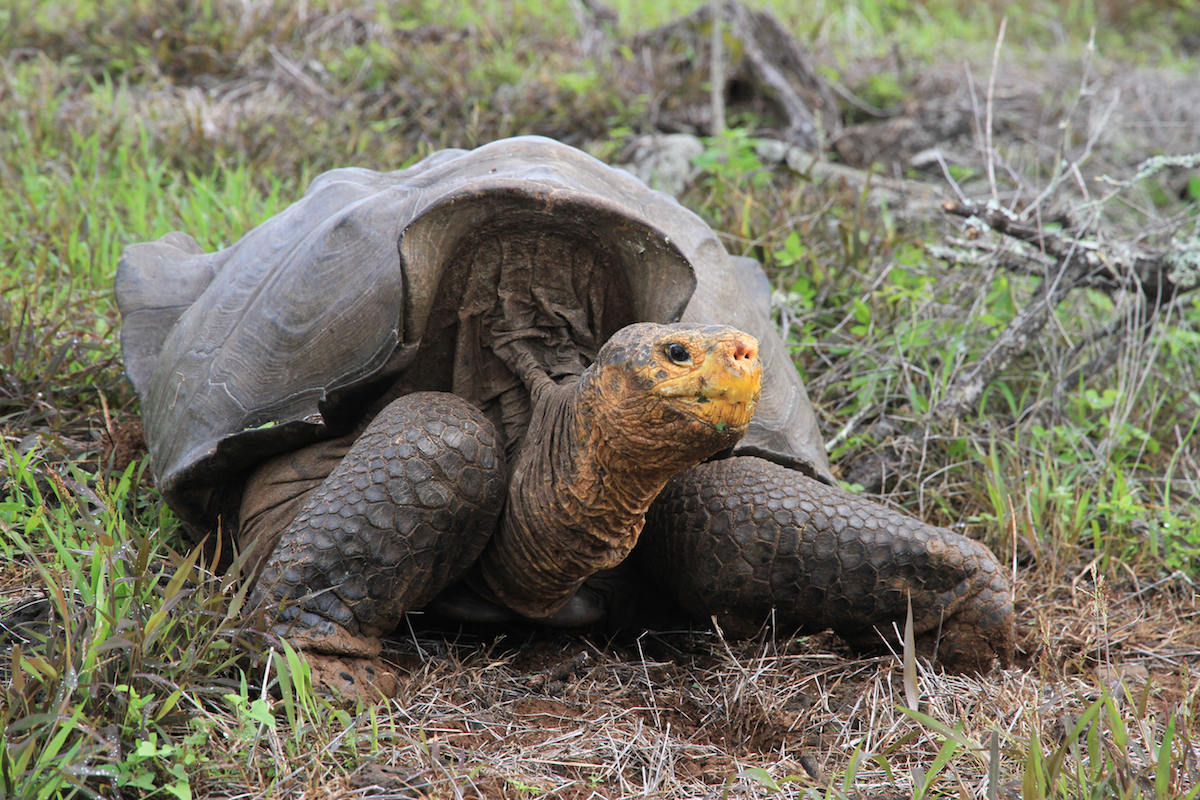Animal Sex: How Galápagos Tortoises Do It

The giant tortoises of the Galápagos Islands are infamous for being one of the animals that inspired Charles Darwin to formulate his theory of natural selection. But it may come as a surprise that despite their fame, the Galápagos tortoises have long been a bit of a mystery to scientists — at least when it comes to their sexual and social behaviors.
"One of the great misconceptions of iconic organisms is that we know much about them," said James Gibbs, a conservation biologist at the SUNY College of Environmental Science and Forestry in Syracuse, New York, who studies giant tortoises. "But tortoise social behavior is barely known, and we're just starting to figure all this out."
As Darwin noticed, there are two distinct types of Galápagos tortoises: saddleback tortoises (including the famed Lonesome George) and dome-shaped tortoises, so-named for the structure of their shells. But aside from having different shells, these reptiles also have very different behaviors. [See Images of Lonesome George, a Giant Galapagos Tortoise]
Saddleback tortoises live in dry environments where there's little to eat for 9 months of the year, Gibbs told Live Science. As their name implies, saddleback tortoises' shells rise in the front like saddles — this adaptation allows them to extend their long necks up to feed on cactus trees.
Male saddlebacks vie for control over cactus trees, but will allow as many females into their shaded domains as possible.
Domed tortoises, on the other hand, live in moist regions where food is plentiful and close to the ground, and the shape of their shells prevents them from extending their short necks up.
Because of the abundance of food, these tortoises don't control territories and instead roam around to find mates, probably using their noses as their guides, Gibbs said. "Having said that, we suspect — and it's probably true — that they may also use ultrasonic communication."
Get the world’s most fascinating discoveries delivered straight to your inbox.
Galápagos tortoises mate throughout the year, but sexual activity typically heats up during the hot months in the beginning of the year.
When two male saddlebacks come across one another, they battle for access to cactus trees — and therefore mates. These fights, however, amount to little more than neck-stretching competitions, with the longer-necked tortoises ultimately coming out victorious (though biting is also sometimes involved).
Male dome-shape tortoises, by comparison, engage much less in competition. "There's a lot more food, but they do sometimes act like bumper cars and just bump into each other with a loud noise," Gibbs said.
Male Galápagos tortoises aren't in the business of wooing their potential mates; rather, they show their interest by harassing the much smaller females. That is to say, a male will spend up to three or four days following a female, trying to mount her, and pushing her around a bit.
"They interfere with daily activities and feeding, but we don't know if it's part of the male's strategy to wear [the female] down," Gibbs said.
Galápagos tortoises, like other reptiles, have cloaca (a single orifice for waste and reproduction) at the base of their tails. The lining of the male's cloaca folds out to form a "penis," which he needs to insert into the female's cloaca for insemination — an act that requires the female's cooperation, as she needs to extend her tail out and lift it so that the male has access.
"Tortoise mating is quite an affair to watch," Gibbs said, adding that males will thrust for 10 to 20 minutes while making loud groaning noises that can carry for miles.
After mating, the female Galápagos tortoise may store the sperm of her mate in her body for at least 7 years for later use.
Follow Joseph Castroon Twitter. Follow us @livescience, Facebook& Google+.



